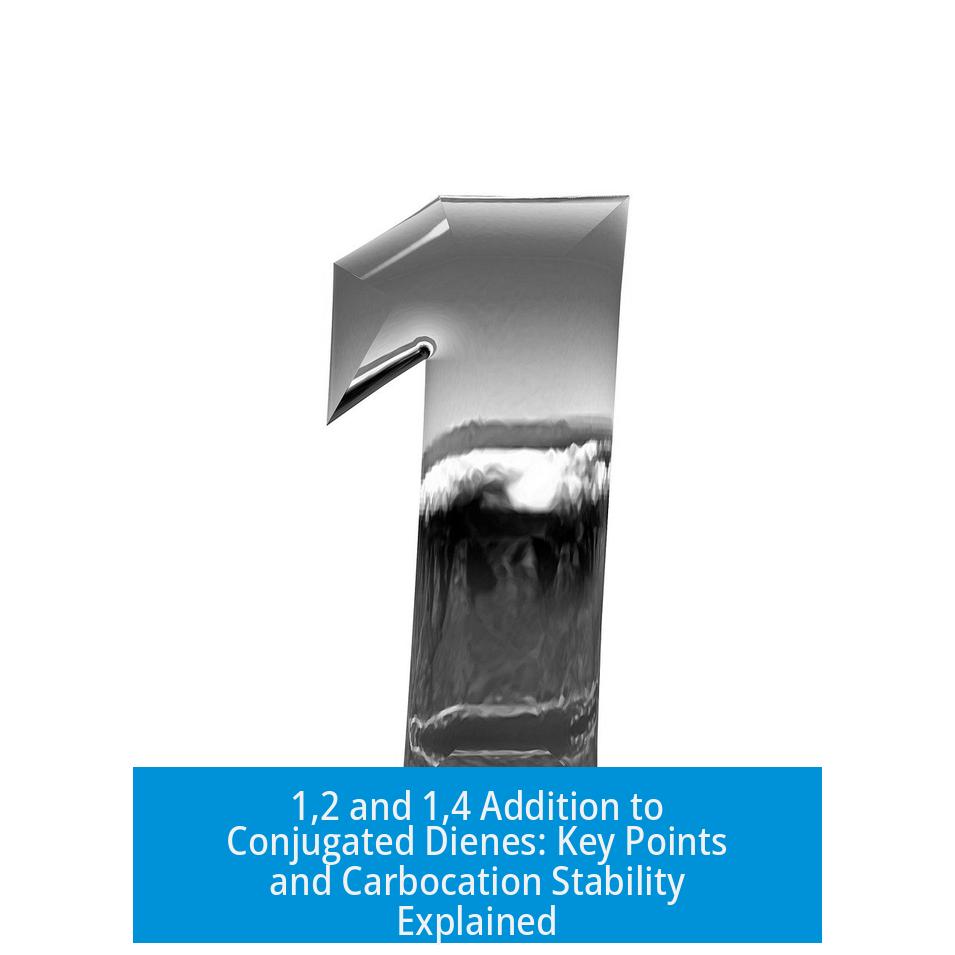Understanding 1,2 and 1,4 Addition to Conjugated Dienes
1,2 and 1,4 additions to conjugated dienes involve electrophilic addition reactions where the electrophile adds either directly to adjacent (1,2) or to terminal carbons across the diene (1,4). The regiochemical outcome depends largely on carbocation intermediates formed during the reaction and their stabilities.
Carbocation Stability Roles
When an electrophile attacks a conjugated diene, a carbocation intermediate forms. This intermediate can localize on different carbons leading to 1,2 or 1,4 addition products.
- Primary, secondary, and tertiary carbocations differ in stability, with tertiary being the most stable.
- More stable carbocations favor certain intermediates and pathways.
- Multiple carbocations can form, adding complexity to the regioselectivity.
The favored addition pathway minimizes overall energy by forming the most stable carbocation intermediate.
Importance of Chain Numbering and Pathway Choice
Assigning the ‘1’ position to one end of the diene is arbitrary. Reversing the chain numbering and drawing alternate pathways help identify which carbocation intermediates are energetically preferred.
- Consider both orientations of the diene.
- Draw carbocation intermediates for 1,2 and 1,4 additions.
- Compare stabilities for each scenario.
- Least energy intermediate guides the preferred product.
Effect of Carbocation Rearrangements
Hydride shifts can relocate carbocations along the chain, impacting the regiochemical outcome.
- Shifts stabilize carbocations by moving to a tertiary or more substituted position.
- Rearranged carbocations may lead to different ratios of 1,2 and 1,4 products.
- These shifts can alter the energy profile of the reaction mechanism.
Summary of Key Points
- 1,2 and 1,4 additions depend on carbocation intermediate stability.
- Numbering choices influence interpretation of possible pathways.
- Hydride shifts can rearrange carbocations, affecting product distribution.
- Energetically favored carbocations determine regioselectivity in conjugated diene additions.





Leave a Comment